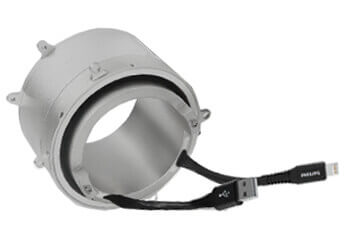Slip rings are an essential electromechanical device designed to transmit electrical signals and power from a stationary unit to a rotating structure. Essentially, they make it possible for a rotating part to remain in motion while maintaining a continuous connection with the stationary element. The significance of slip ring data speed cannot be overstated. Data speed denotes the rate at which data transfers from one point to another within the system. The ability of a slip ring to efficiently transmit data at high speed without any loss or distortion directly impacts the performance and functionality of the device it’s incorporated into. Therefore, the quality of a slip ring is intrinsic to the rate at which it can allow data to flow. The higher the data speed, the more efficient the slip ring is.
Applications of high-speed slip rings are found in a varied range of industries, illustrating their versatile use. For instance, in the field of medical imaging, the data transmission from the rotating part of a CT scanner to the stationary system must be precise and swift, necessitating the use of high-speed slip rings. Similarly, in telecommunications, they are used for signal transmission in satellite dishes. Also, in the field of energy, they’re used in wind turbines where the transfer of data from the moving blades has to be instantaneous to calculate power output accurately. The uses are countless, encompassing industries like manufacturing, defense, and broadcasting, all relying on the effective operation of high-speed slip rings.
Factors Affecting Slip Ring Data Speed
Data speed in slip rings is influenced by a variety of factors. One of the foremost contributing elements is bandwidth and transmission rate. Bandwidth essentially refers to the maximum data transfer rate of a network or system, indicating the amount of data that can be sent over a specific connection in a given amount of time. In slip rings, higher bandwidth equates to better data speed, allowing for the swift, efficient transfer of power and signal.
Secondly, the materials from which the slip ring contacts are made, and their surface quality, significantly impact data speed. The choice of contact materials determines the electrical conductivity and wear resistance of the slip ring, two factors that, in turn, govern the data transfer rate. High-quality materials ensure minimal electricity loss and optimal signal integrity. The surface quality of the contact materials also affects the smoothness of the connection, further embellishing or deterring the data speed.
Moreover, the signal-to-noise ratio (SNR) plays a significant role in data speed. In any data transmission, the ‘signal’ refers to the useful information being transmitted, while the ‘noise’ encompasses all the undesired signals that can interfere with the primary signal. The SNR quantifies the level of signal clarity. When the ratio of signal strength to noise is higher, the data transmission is clearer and faster, consequently enhancing the data speed.
Shielding is another crucial factor that can affect data speed in slip rings. Effective shielding solutions reduce electromagnetic interference (EMI) and radio frequency interference (RFI), both of which can lead to data loss or distortion. Therefore, properly shielded slip rings ensure that the transmission is not only faster but also more accurate and less compromised.
Finally, environmental factors such as temperature can considerably impact data speed. Slip rings operating at extreme temperatures may face altered electrical properties, affecting the speed and integrity of data transmission. The durability and performance of slip ring materials are designed for specific temperature ranges, and exceeding these limits can decrease data speed.
In conclusion, understanding these interconnected factors is crucial to optimizing data speed in slip rings, and enhancing overall device performance across a wide range of applications.
Types of Slip Rings for High Data Speed
Different types of slip rings cater to various applications, and their respective data speed capabilities determine their suitability for specific usage. Below are some common types of high-speed slip rings and their key features.
Gigabit Ethernet Slip Rings
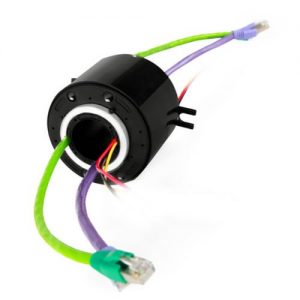
These slip rings are engineered to support the high-speed data transmission requirements of Gigabit Ethernet systems. They facilitate data transfer rates of up to 1000 Mbps and provide stable electrical properties, contributing to improved communication and performance. Gigabit Ethernet slip rings are particularly useful in real-time systems, such as surveillance cameras, where large volumes of data need to be reliably transmitted at high speeds.
USB Slip Rings
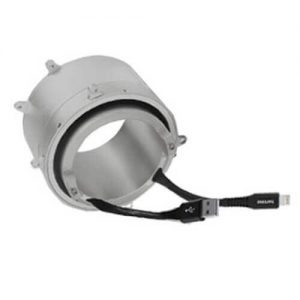
USB slip rings are designed to transmit USB interfaces’ data and power signals. These slip rings are compatible with different USB protocols (USB 1.0, 2.0, and 3.0) and are ideal for applications requiring seamless data transfer through a USB connection, such as robotics, industrial automation, and remote monitoring systems. By integrating USB slip rings, a stable and high-speed data transfer rate can be achieved even with continuous rotating motion.
DVI and HDMI Slip Rings
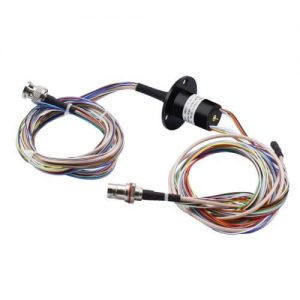
These slip rings offer high-definition media interface (HDMI) and digital visual interface (DVI) signal transmission for video and audio data, ensuring high-speed connection without signal degradation. Widely used in multimedia, broadcasting systems, and video conference equipment, these slip rings deliver a superior data transfer rate while maintaining the clarity and integrity of audio and video information throughout the process.
Optical Fiber Rotary Joints

Optical fiber rotary joints serve as slip rings written by light on a superfine glass fiber, rather than using conventional electrical contacts. Utilizing optical fiber technology, these rotary joints enable ultra-fast and high-bandwidth transmission without electromagnetic interference. Applications requiring the highest data speed, long-distance transmission, and extreme precision, such as radar systems, satellite communication, and high-speed trains, benefit enormously from optical fiber rotary joints.
Customized High-Speed Slip Rings
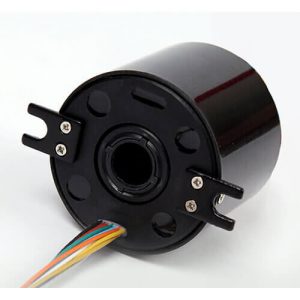
For unique applications and demanding environments that require specialized solutions, customized high-speed slip rings can be designed to cater to specific performance criteria or environmental conditions. These tailor-made slip rings ensure optimal performance and reliable data transmission in cases where conventional off-the-shelf options are unsuitable.
In summary, the choice of slip ring type is crucial for achieving the desired data speed, and a broad range of options exists to accommodate diverse applications. By understanding the nuances of each slip ring type, the appropriate solution can be selected to ensure compatibility, efficiency, and performance in any given context.
Improving Data Speed in Slip Ring Systems
Improving data speed in slip ring systems hinges on several key factors, sighted below. Comprehensive consideration of these elements ensures optimal functionality and longevity of the slip ring while maximizing data transmission speed and efficiency.
Choosing the Right Slip Ring Type
The first step toward improving data speed is selecting the appropriate slip ring type for your application. As discussed earlier, different slip ring types have various data speed capacities and are suited to different uses. The right choice reflects the connection type (USB, HDMI, Optical) and the data speed required. It also takes into consideration electrical noise restrictions, bandwidth requirements, and the operational environment. Correct selection ensures that the slip ring can perform at its optimum consistently, thus ensuring high-speed data transmission.
Proper Installation of Slip Rings
The installation process of the slip ring significantly influences its performance and, consequently, its data speed. The alignment of the stationary and rotating units, the correct routing of cables, and the stability of the mounting all contribute to the slip ring’s ability to transmit data efficiently. Poor installation could result in lower contact quality, increased electrical noise, and ultimately poorer data speed. Professional, accurate installation is, therefore, crucial for maximizing data speed.
Maintaining and Troubleshooting Slip Rings
Regular maintenance and effective troubleshooting are also vital for high data speed in slip rings. Periodic cleaning, inspection, and replacement of worn-out components help prevent decreased performance or potential failure. Timely identification of issues like connectivity problems, excessive vibration, and abnormal noise can resolve problems early before they significantly affect data speed. A proper maintenance schedule and effective troubleshooting are, therefore, proactive measures to ensure optimal data speed.
Upgrading and Enhancing Slip Ring Systems
As technology advances, upgrading and enhancing slip ring systems become essential for keeping up with increasing data speed demands. Upgrades could involve switching to slip rings with higher data speed capacities, such as from standard Ethernet to Gigabit Ethernet slip rings. Enhancements could include better shielding for reducing electrical noise or wiring upgrades for higher bandwidth. These proactive upgrades and enhancements ensure that the slip ring system continues to meet the increasing demand for high data speed requirements.
In conclusion, through thoughtful selection, proper installation, regular maintenance, and timely upgrades, it is possible to significantly enhance the data speed of slip ring systems, allowing them to perform more efficiently and adapt to the evolving demands of various applications.
Slip Ring Data Speed: Key Considerations for End Users
Adopting high-speed data transmissions requires careful analysis of several factors to ensure the chosen slip ring system is the right fit for the application. Below are a few key considerations that end users must pay attention to while selecting slip rings for high-speed data transmission.
Compatibility with Existing Systems
The selected slip ring should be compatible with the existing system in terms of connection type and data protocols. The slip ring mechanism must support the hardware and software of the device it is integrated with, enabling seamless connectivity and functioning. This requires understanding the connection protocols of existing systems and ensuring the selected slip ring appropriately matches them.
Transfer Rate Requirements
Different applications have varying data transfer rate requirements, so it’s important to choose a slip ring that can meet or exceed these needs. High-speed applications such as real-time surveillance or multimedia broadcasting may require data transmission rates from Mbps to Gbps. Understanding the transfer rate requirements can guide the choice of slip ring types, prompting towards Gigabit Ethernet, HDMI/DVI, or Optical Fiber Rotary slip rings depending on the requisite speed.
Data Integrity and Error Rate
The quality of data transmitted is equally as important as the speed. The selected slip ring must maintain data integrity, which means it should transmit information fully, accurately, and consistently, ensuring minimal signal loss. Alongside, the error rate—instances when transmitted data does not match the received data—should be minimal for precise and efficient operation.
Budget and Cost Considerations
While functionality is essential, it’s also crucial to consider the costs involved. Depending on the specific application, users may want to compare the cost of different types of slip rings and balance the performance needs with budget constraints. Regular maintenance and potential replacement costs should also be considered in budgeting.
Service Life and Maintenance
The expected service life of the slip ring and its maintenance requirements are important considerations. Many high-speed slip rings are designed for long life, but the duration can vary based on usage conditions. Users must review the expected lifespan and recommended maintenance schedule to ensure the selection aligns with operational needs and resources.
In summary, these considerations provide a practical guideline for end users to select the most suitable high-speed slip ring system for their applications. Comprehensive understanding and careful analysis of these factors lead to optimal selection, ensuring reliable, efficient, and cost-effective data transmission performance.
Slip Ring Data Speed: Companies and Applications
Slip rings provide a critical advantage in various sectors. The application of slip rings, particularly high-speed slip rings, allows different industries to fend off the challenges of transferring data amidst constant motion. Let’s examine some practical cases in which high-speed slip rings have revolutionized operations.
Aerospace and Defense Systems

In aerospace and defense, high-speed slip rings are integral to radar systems, satellites, and other advanced devices. For example, slip rings are included in radar systems for airplanes and marine vessels to deliver high-speed transmission of constant and accurate positional data. These slip rings must meet rigorous criteria for data transmission speed, durability, and reliability amidst challenging operational conditions.
Medical Equipment and Robotics

In medical facilities, high-speed slip rings are incorporated in devices such as CT scanners, which require constant, high-speed data transmission while rotating around the patient. In robotic surgery, slip rings allow the transmission of real-time, high-definition video signals and control data, providing surgeons with precise control and immediate feedback. In these applications, the data integrity and speed offered by high-speed slip rings are crucial.
Telecommunications Industry
The telecommunications industry utilizes slip rings in many applications, including satellite communication and data centers. For instance, in satellite communication, optical fiber rotary joints (a type of high-speed slip ring) enable ultra-fast, high-bandwidth transmission between the rotating satellite dish and stationary equipment. In data centers, high-speed slip rings allow for efficient cooling and cable management while maintaining the high-speed data transfer needed for modern internet services.
Broadcasting and Entertainment

In the broadcasting and entertainment sector, high-speed slip rings are used in equipment such as broadcast cameras and stage equipment. For live sports broadcasting, rotating camera systems make use of high-speed HDMI or DVI slip rings to transmit high-definition video signals. In stage equipment, high-speed slip rings enable lighting rigs to rotate smoothly while maintaining synced control and power signals, contributing to mesmerizing light displays at concerts and theatre performances.
Renewable Energy

In the renewable energy sector, wind turbines heavily utilize high-speed slip rings. These slip rings ensure the continuous transmission of data and power between the stationary and rotating parts of the wind turbine. This reliable, high-speed data transmission allows for real-time monitoring and control of turbine operations, facilitating efficient power generation and predictive maintenance.
In conclusion, each sector presents unique challenges that high-speed slip rings help to tackle, ensuring reliable, efficient, and timely data transmission irrespective of the environment’s conditions and demands. As technology advances, the roles of high-speed slip rings across various industries will continue to expand, paving the path for ground-breaking applications.
Conclusion
As technology advances and various industries embrace the exponential growth of data requirements, the importance of high-speed slip rings has surged. Given the extensive range of applications that require high-speed data transmission—such as aerospace, medical, telecommunications, broadcasting, and renewable energy—slip rings play a pivotal role in these sectors’ operations and success. The demand for faster and more efficient data transfer underscores the significance of high-speed slip rings in modern applications.
Reliable and efficient data transmission is paramount, as it directly influences the performance, capabilities, and overall experience of modern applications. In sectors like military defense and healthcare, where lives depend on the accuracy and timeliness of data, optimizing data speed, integrity, and error rates is a crucial aspect of a slip ring system’s performance. By developing and selecting compatible slip rings explicitly designed to cope with high-speed data transmission, industries can ensure they are equipped to handle the ever-evolving data demands and maintain their competitive edge.
As data speed advancements unfold, so does slip ring technology. Slip ring manufacturers will continually focus on developing innovative solutions that cater to the higher speed and more complex data transmission requirements that future applications will undoubtedly demand. These developments may include further enhancements in optical fiber rotary joints, breakthroughs in materials and contact technology, or entirely new methods of achieving high-performance data transmission amidst rotational motion.
In conclusion, the critical role and growing importance of high-speed slip rings in various industries cannot be overstated. As the world continues to embrace the digital era, the quest for faster, more reliable, and more efficient data transmission solutions will persistently push the boundaries of slip ring technology. By understanding the significance of high-speed slip rings and implementing them effectively, industries can enable advancements and create a more connected, capable, and robust future.
See What We Can Do

